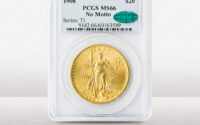Buoyant gold reaches resistance levels, but underpinned by central banks
Central bank purchases, the year of the rabbit celebrations and minor US dollar weakness have spurred gold to US$1936. But after a heady appreciation of 19 per cent since the November 2022 lows, the bullion price is now meeting resistance.
A US dollar dive, worsening wars in Ukraine or Middle East are needed for gold to maintain momentum and test the all-time 2020 high of $2074 an ounce. Similar events are also required for Silver which has risen by 25 per cent to US$23.66 in the same time frame.
If those events, or similar crises do not take place, the risk for gold holders is a setback in the short term. In those circumstances central banks are likely to bargain hunt.
“What concerns me a little about this move is the relative under-performance of silver – typically it outperforms gold during the early stages of a bull run … and it isn’t,” says Ross Norman, CEO Metals Daily. “It feels like a large single actor has a buying programme.”
“Perhaps the motivation is a play expecting further US dollar weakness as the economy improves – perhaps they see inflation becoming entrenched, or perhaps they see the Fed being forced into a rate rise pivot as the economy struggles.”
Speculation has also risen recently and if these bulls are disappointed, they could swiftly cut positions. Hedge funds and smaller trader net holdings were 17.6 million ounces or 547 tonnes on January 17, according to the US Commodity Futures Trading Commission (CFTC). Investors in gold exchange traded funds (ETFs) hold as many as 3,462 tonnes and holders tend to be jittery when the price turns down. For example when the price was relatively depressed between September and October last year, ETFs dumped 227 tonnes of gold.

Despite these concerns analysts and traders do not expect any major price decline and indeed inflation and expectations of easier money and a fall in interest rates if there is a global recession could weaken the dollar and boost gold.
“We expect the US dollar to weaken further and bond yields to fall, but gold appears to have priced in much of these risks already,” says Suki Cooper, precious metals analyst at Standard and Chartered Bank.
But given the extent of central bank bargain hunting and the expectation that jewellery demand for precious metals will remain buoyant in India and increase in China now that lockdowns have been lifted, any price correction is likely to be limited, she says.
Recent speculative an investment buying contrasts with the pessimism between September and early November when gold traded between US$1600 and US$1700 an ounce. In the third quarter of last year, managed funds had sold gold short aiming to buy it back at a lower price while investors offloaded exchange trade gold funds and products (ETFs) equivalent to 227 tonnes of gold.
Massive central bank purchases
Fortunately for gold buffs central banks took advantage of the lower prices and in the third quarter of last year bought 400 tonnes. Indeed total purchases in the eleven months ended November 2022 reached 754 tonnes, the highest annual central bank buying since 1967. That was the year before the fixed price of $35 an ounce was abandoned and the free bullion market began.
The main official buyers of gold were China, Turkey, Russia, UAE, Qatar, India, Uzbekistan, Kazakhstan and Cambodia. China bought steadily, raising its disclosed official holding to 2,010 tonnes, but according to various unconfirmed estimates, central bank, parastatal, defence and other official holdings exceed 5,000 tonnes. Saudi Arabia’s sovereign wealth fund has reportedly been a buyer too.
A gold backed yuan?
“As global oil contracts increasingly use the yuan, gold may return as a settlement medium via RMB-gold convertibility in a new China economic and monetary system,” says Paul Wong, market strategist at Sprott, a global asset manager. “The need to build sufficient gold for this facilitation is another possible reason for the massive surge in gold imports from China in 2022 and the early days of 2023.”
Wong maintains that gold may become more attractive than the US dollar for countries aligned to China. RMB-gold convertibility would help them avoid sanctions risks from the West, he says.
Following extensive purchases in recent years the WGC estimates that Russian central bank gold reserves total 2,299 tonnes, India, 785 tonnes, Turkey, 489, Uzbekistan, 390 and Kazakhstan 381 tonnes. Saudi Arabia’s official gold reserves are 323 tonnes, but that is regarded as an underestimate.
Silver has under performed despite excellent fundamentals
Wong of Sprott believes that silver is oversold. He notes that the metal will be increasingly in demand for solar panels and other industrial uses. He adds that Gold miners had a very volatile year as well and fell sharply to oversold levels in illiquid trading conditions. Stock pickers specialising in the sector say that several mines are undervalued. Despite inflation, costs of producing the gold are well below international prices, so many of these mines are very profitable, especially those that are raising production.
Analysts of UBS, the Swiss bank say that there are three tailwinds for gold: central banks are diversifying into gold; the proportion of institutional investor gold holdings relative to overall assets “remains light.” And the Federal Reserve Board will likely cut rates in the second quarter of this year.
© copyright Neil Behrmann.(https://neilbehrmann.net) less detailed version is published in The Business Times Singapore . For other Asian and global articles try https://subscribe.sph.com.sg/publications-bt/
[ad_2]
Source link

